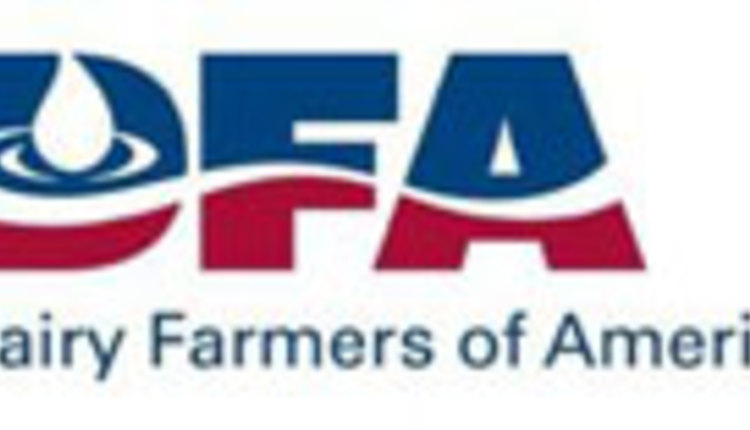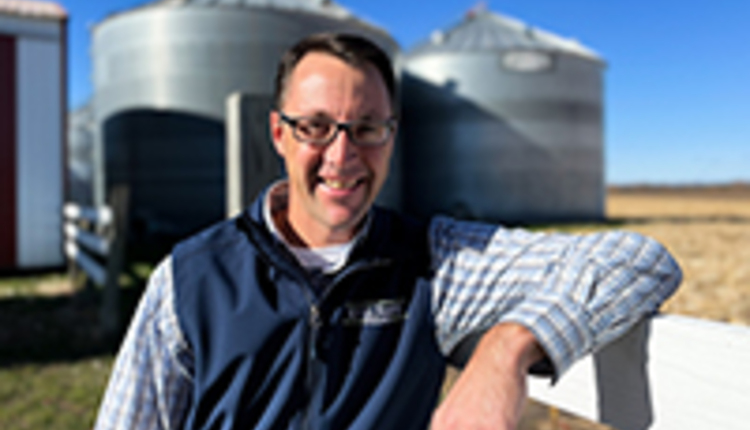The information below has been supplied by dairy marketers and other industry organizations. It has not been edited, verified or endorsed by Hoard’s Dairyman.

Trying to be a superhero can be daunting. When people try to overachieve and “do everything,” stress can build up inside them, and they may not recognize it until it has taken a physical and/or mental toll. Stress will impair your immune system, increase risk of heart issues, upset your reproductive and digestive systems, speed up the aging process, and much more. Same can be true for your cows.
“Stress is complicated. The dairy industry has identified many stress factors, but we often only focus on a small handful, and even then, the industry tends to address them individually,” says Chris Gwyn, Jefo North America ruminant business development manager. “In reality, stressors can interact, and as farmers know, they can compound one another, negatively impacting cow health, performance, reproduction, longevity — and ultimately your revenue. We call it the Jenga® effect. Stressors are like the wooden blocks in that board game. When you stack stressors on top of one another, and you’re missing solutions to overcome them, the risk of losses magnifies. Specifically, those losses are poor reproductive performance, immune dysfunction, increased cull rates and mortality, and reduced milk production and component yield. At Jefo Nutrition, we’re creating more awareness of the many different stress factors and the solutions available to help keep cows comfortable, healthy and productive.”
According to Gwyn, more than 30 different stressors can affect the health and performance of dairy cows. Jefo Nutrition has grouped them into five major areas of concern and outlined keys to reducing their potential damage:
1) Weather
As summer temperatures climb, we hear a lot about heat stress. A dairy cow experiences stress when her heat load is greater than her capacity to dissipate heat. She often will adapt by modifying her metabolism to reduce heat expenditure. “To help battle heat stress, we recommend a whole farm approach, including management, feeding and precision nutrition strategies,” says Gwyn. “The goal is to maintain good health, feed intake and production levels, even when the Temperature-Humidity Index (THI) reaches 68 or higher.
“Farmers rely on heat abatement strategies, including the use of fans, misters and shade,” explains Gwyn. “It’s also important to increase clean water supplies and avoid overcrowding. In addition, farmers should deliver feed during the coolest time of the day, increase nutrient density of the ration, feed high-quality forages, and increase feeding frequency to avoid heating of the ration. And the third principal to the whole farm approach is a precision nutrition strategy. Research shows that a blend of rumen-protected B vitamins can help cows cope with heat stress. In short, supplying protected B vitamins improves the animal’s ability to more efficiently make energy and protein.”
Research even shows it may be beneficial to increase the feeding rate of protected B vitamins (choline, riboflavin and folic acid) during hot weather. On a 1,200-cow commercial herd in Queretaro, Mexico, researchers evaluated the effect of feeding a higher rate (100g vs 50g) of the B vitamin blend on health, milk production and reproduction. The owner was already feeding the blend with good success but wanted to determine if a higher feeding rate would benefit his transition cows during hot weather. Results showed that the higher feeding rate reduced metritis by 33.1% and retained placentas by 41%. In addition, there was a 34.7% increase in the first service conception rate, a 22.4% increase in percentage of cows pregnant after two services, and milk yield was increased by 2 pounds at 10 days in milk (DIM) and 3.7 pounds at 30 DIM.
During another heat-stress study, researchers evaluated the effect of rumen-protected B vitamins and choline supplementation on subclinical ketosis by measuring blood levels of beta hydroxy butyric acid (BHB). Data was collected from 701 cows on 20 farms in Mexico. First, to establish the prevalence of the metabolic disorder, results showed there was a 50% increase of subclinical ketosis during the hot season (cows calving between April 1 to September 30) versus the cool season (October 1 to March 31). Next, researchers measured subclinical ketosis during the hot season and determined that when transition cows were supplemented with the blend of rumen-protected B vitamins and choline, the prevalence rate was reduced by 55.3%.
Stress also can occur during winter weather, adds Gwyn. Cows strive to maintain a constant core body temperature of about 101 degrees Fahrenheit. When a cow’s temperature drops too low, she has to expend extra energy to stay warm. To remain productive, animals need protection from extreme cold and excessive snow, rain and dampness. Other strategies to combat weather-related stressors include good year-round air quality and proper lighting, as a lack of light can slow down metabolism and lead to less productivity.
2) Routine Management Procedures
Can management routines unknowingly cause stress? Routine procedures may seem low stress but when they overlap, they can cause issues. Here’s a short list of potential management-related stressors: stocking density, group changes, mixed parity groupings, bunk space, human-animal interactions, housing issues, herd health status and social stress. During a recent Rumination Podcast: Impacts of Stressors on Physiology and Health of Dairy Cows (Season 3, Episode 4), Dr. Trevor DeVries, professor at University of Guelph, discussed how social stress can have a negative impact and how it can come from a variety of places. “Cows are social animals, and they like to be in social environments,” explains Dr. DeVries, “but there are aspects of a social environment that may have a negative effect on cows and actually be stressful. For example, overcrowding at the feed bunk or in the parlor’s holding pen.”
Dr. DeVries also mentioned parity composition of groups and how mixing young animals in with older animals can cause stress, especially in the younger cows.
When it comes to reducing management-related stress, attention to cow comfort is critical. “The old saying is: A comfortable cow is a cash cow,” says Gwyn. “While many factors can affect cow comfort, we recommend adequate feed and resting space, protection from the elements, access to high-quality feed and water, and training employees on proper animal interactions. Human and animal interactions must be positive, calm and quiet. A fearful cow is a stressed and less productive cow.”
Dr. DeVries said acute stressors, such as poor handling, can have a direct impact on cow physiology and her productivity. “A clear example of that is bad handling of cows in the milking parlor,” says Dr. DeVries. “A stress like that can cause a cortisol spike in cows, which may lead to a block or reduction in oxytocin release, which may limit milk let down.”
3) Stage of Production
Calving can be one of the most stressful and metabolically challenging times for a cow, yet there are other key periods of production where significant physiological stress also can occur, including dry-off, pre- and post-calving periods, early lactation through peak milk and breeding.
During another recent Rumination Podcast: Impacts of Stress and Strain on Reproductive Health (Season 3, Episode 6), Dr. Matt Lucy, professor at the University of Missouri, explained that stress is a big factor in getting cows pregnant. “Traditionally, we always thought about the effects of stress on ovarian function. Whether or not the cow had started cycling and come into heat. But more recently, we’re trying to understand specifically how stress affects uterine function and the preparation of the uterus for that pregnancy.”
According to Dr. Lucy, it’s important for farmers to understand that reproduction starts in the dry cow pen. “Avoid the long-term drag on cows and take care of them in the transition pen.”
Dr. Lucy adds that it’s important to know the difference between stress and strain. “Cows are stressed, but the strain is what matters — how the cow responds to that stress. For example, we have a lot of cows in a herd that make 100 pounds of milk per day. The stress is the production. However, the strain is how she responds to that. We want our cows to have very little strain.”
Genetics allows a farmer to select for a more resilient cow. “We want cows that can handle these stresses,” says Dr. Lucy. “Once we have the right kind of cows, then as a producer, you have to manage the remaining strain. You cannot fix everything with genetics — you have to be a top producer and manage the remaining strains like heatstroke, nutrition, bunk space and so forth.”
4) Intake
According to Dr. DeVries, cows can suffer from nutritional stresses. These can be physiological, such as how her body literally reacts to a change in diet; how the rumen adjusts to it. Or it can be perceptual as the cow simply views a diet change as different and she may stop eating. That intake reduction has a trickle-down effect on energy balance, production and health of the cow. This snowball effect then can lead to even more problems.
Dr. Lucy concurs, stating there is no substitution for good management and nutrition. Dr. Lucy recommends consistency. “Cows want consistency. In a perfect world, cows get the same TMR at the same time delivered by the same person using the same tractor.” He adds that this type of balance acts like a suit of armor for cows and helps them manage the strain from many stressors.
5) Herd Health
Whether the problem is lameness, ketosis or mastitis, it’s worth managing, preventing and treating, says University of Manitoba animal science professor Dr. Meagan King during a recent Rumination Podcast (Season 3, Episode 5): Precision Technology to Monitor and Predict Animal Health. “From subclinical ketosis to moderate lameness, it is definitely worth doing something about it.”
A lot of Dr. King’s research has been looking at the impact of stressors on production, whether it is from lameness, overcrowding or feed delivery. She recommends using precision technology, such as rumination or activity tracking information, to look at behavior, help identify problems early and make better management and nutritional decisions to treat the problem.
While stress can be complicated, Gwyn says that the key is to identify which stressors have the biggest impact on you, your cows and your team. He reminds farmers to not stress out about things they can’t control or can’t change, and to know that there are people and resources available to help. Jefo Solutions are designed to help farmers cope with everyday stressors and keep cows healthy and producing at a high level. Learn more at JefoDairyStressors.com, a new website dedicated to research and resources that help farmers understand and manage stress.










